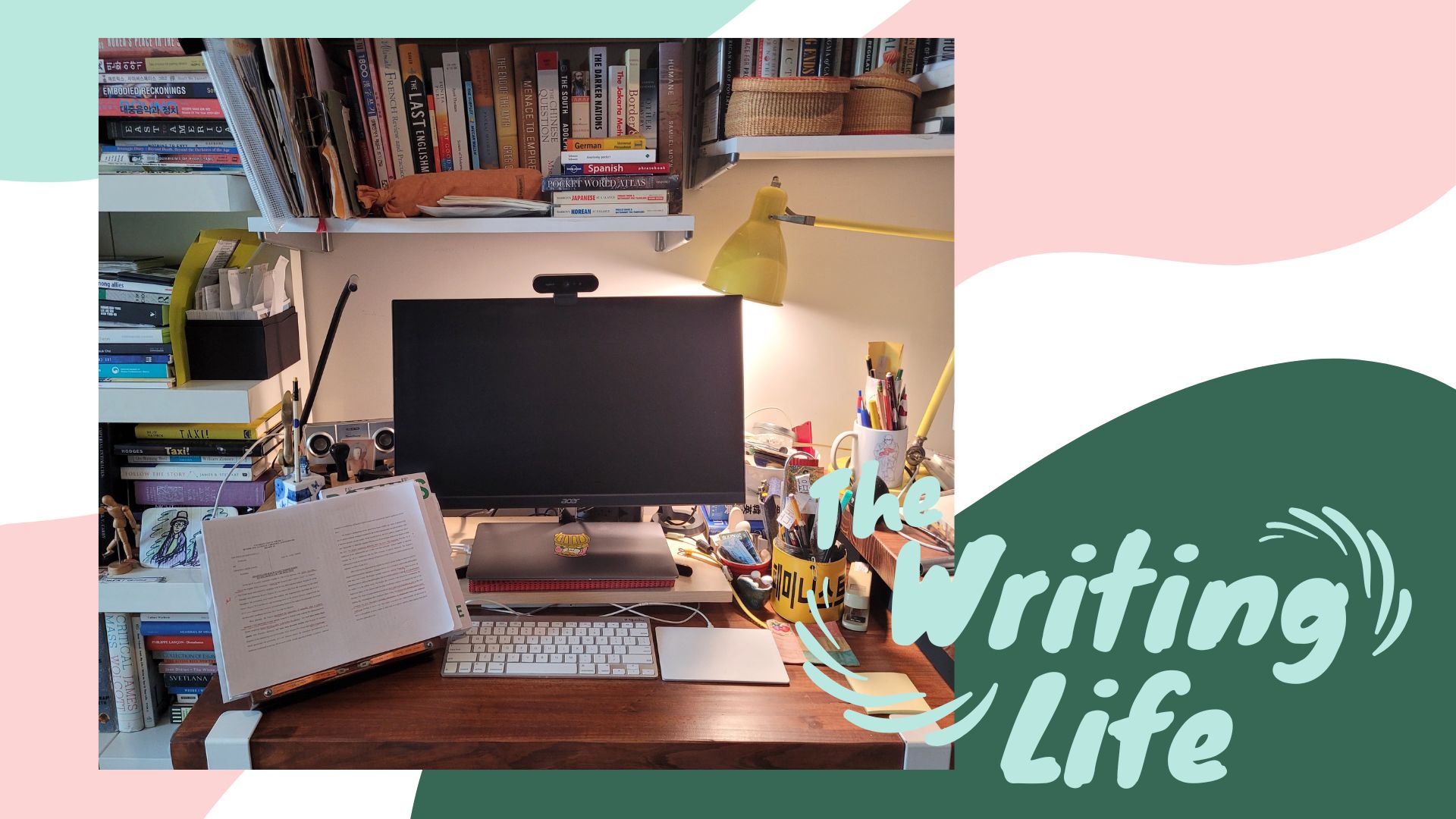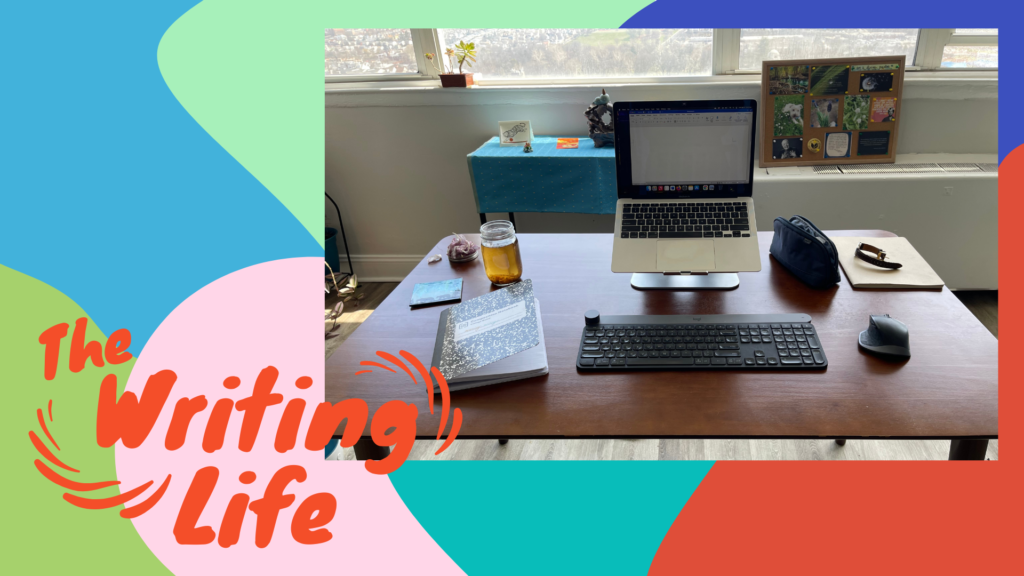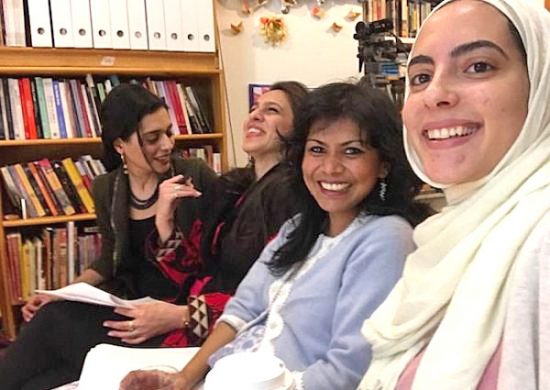Former Open City fellow E. Tammy Kim answers ten questions about her writing life

May 5, 2022
“Writing is easy,” Pulitzer Prize–winning sportswriter Red Smith once said. “All you do is sit down at a typewriter and open your veins, and bleed.” Putting pen to paper (or fingers to a keyboard) is never a simple task, even for seasoned writers. Even our Margins and Open City Fellows—and there’s quite a handful of them—can attest to that. Many of them, though, have gone on to write and report for mainstream publications and publish books. In this series, we reached out to our former fellows and asked them to give us a glimpse of their writing lives and to share some tips on how they navigate this creative process called writing.
E. Tammy Kim wrote several stories for The Margins during her Open City fellowship from 2012 to 2013. She featured two DREAMers, Lis and Jeff, in the collaborative series on undocumented New Yorkers. At least two of her stories dug into housing issues in New York City. In “Compromise City: A Battle Over Affordable Housing,” she shed light on the controversy surrounding the development of mixed-income housing in the Lower East Side. Her photo essay “11 Allen Street: Portrait of a Chinatown Housing Struggle” presented the case of a building‘s tenants, some of whom had lived there nearly thirty years, who were ordered by their landlord to vacate their homes.
Tammy also profiled a tiny, old-style lunch counter in the Lower East Side that was slowly being crowded out by fancy restaurants (and has since closed), in “Classic Coffee Shop, Thirty-Six Years on Hester Street.”
Here’s Tammy.
—Noel Pangilinan
1. What’s on your nightstand?
I wish my Brooklyn bedroom were large enough for an actual, substantial nightstand. But I have next to me a copy of the New Yorker and Chang-rae Lee’s The Surrendered, a vivid Korean War novel that recently gave me nightmares.
□ □ □ □ □
2. How do you start your day? What’s a typical day for you?
The reporting life means a lot of traveling and talking to strangers. When I’m home, though, putting all that data into strings of words, my day is coffee and Korean breakfast (often a hot soup and rice or noodles), then email catch-up, followed by hours of zigzagging between various forms of procrastination (cleaning and cooking are my favorites) and writing or revising.
□ □ □ □ □
3. Any writer who influenced you growing up?
I think I became a writer by proofreading for my mom. Her English is excellent, but it’s not her native tongue, so she often asked me to check for errors in her reports for work and her night-school classwork. Thanks to her, I had an early start on syntax, diction, punctuation, and rhythm.
□ □ □ □ □
4. When do you write best—morning, afternoon or at night?
When I’m on deadline, I write whenever, wherever. When I have some leeway, mornings are best. I love the quiet, the soft light through the curtains, and the promise of many hours to go. One of my friends often wakes up at 4:30 to have his own private time in the city; that’s too early for me, though I see the appeal.
□ □ □ □ □
5. Do you have any tips for interviewing people?
I still get nervous making calls and approaching strangers, but interviewing can be really fun. For someone other than a PR representative or corporate or government official, it’s best to interview in the flesh, at a time and in a place that puts them at ease. Home is ideal: you get so much ambient detail by seeing how and where they live. I use a recorder and take notes on paper at the same time. I adjust my wardrobe and manners to put myself in the background. I try to ask simple, short questions. Other essentials: water, snacks, tissue, breath spray.
□ □ □ □ □
6. How do you deal with writer’s block?
Deadlines—I’m obsessed with meeting them, so writer’s block isn’t an option. The other trick is the “vomit draft,” a term I picked up from the legendary magazine editor Tina Brown. The idea is to just write, unselfconsciously, filling your page with absolute junk until it gets decent, then good. It works every time.
□ □ □ □ □
7. If you didn’t write, what would you do for work?
I had a first career as a social-justice lawyer, but if I switched out now, I might attempt union organizing or being a personal chef. Both jobs seem agonizing, slightly martyrish, meaningful, and filled with creative experimentation. They’d undoubtedly make excellent fodder for absurdist fiction.
□ □ □ □ □
8. What’s your favorite bookstore or library? Tell us why it’s your favorite.
Before the pandemic, I had a community membership to the library at Pratt, the art school in Brooklyn. The library is a freelancer’s dream: small and usually quiet, with beautiful glass-tile floors in the stacks. It’s also across the street from a very good slice place.
□ □ □ □ □
9. What’s the best or worst piece of writing advice you’ve received?
One of my editors at Al Jazeera America, Caroline Preston, taught me to cut down the quotes in my pieces. She told me to include only the gemlike phrases, the source of power in each quote. I think about this every time I write.
□ □ □ □ □
10. What’s your fondest memory of being an AAWW Fellow?
One of the other fellows, Rishi Nath, invited us all to a karaoke bar in Queens. Quintessential New York! I liked that we were just ourselves, no literary facades or bullshit; just bad singing, bad beer, and multicolored lights.
□ □ □ □ □
Other stories in The Writing Life series:
I Am Still Developing as a Writer by Hannah Bae
Write a Sentence—Any Sentence—No Matter How Bad It Is by Astha Rajvanshi
Intuition Is My Main Tool by Chaya Babu
Writer’s Block? What’s That? by Humera Afridi



